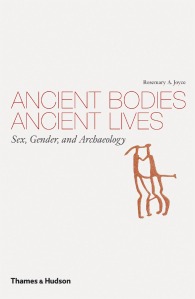“Bronze Age Woman Had Surprisingly Modern Life”
Ok, I think: what are we talking about here? what would be both modern and surprising?
The subtitle of the article clarifies things:
The stunningly well-preserved remains of the Egtved Girl from 3,500 years ago reveal her travels as a high-status woman of her day.
Ahah! the “surprise” is that a female in the past was not tied strictly to the place she was born.
Which is less surprising than it is revealing about the assumptions people today– or at least science writers– bring to their encounters with the past.
The new research on the burial from Egtved, Denmark (originally excavated in 1921) uses strontium isotopes captured in hard and soft tissues of the body of a 16 to 18 year old to trace the woman’s movements during her lifetime. Strontium values for her molar, which were fixed during her childhood, are significantly different from those of her resting place. While more than one distant area could match her childhood signature, the researchers use data from animal products in the burial to suggest her most likely point of origin was the area of the Black Forest, today within Germany.
By now, it should surprise no one to find that individuals in the distant past traveled a long distance from the place they were born to where they died. As Karin Frei, lead author of this study, says
“We have a perception of ourselves today as very developed people, like globalization is new…But the more we look in prehistory, we can see we’re already global.”
Indeed, experts quoted in news coverage, and scholarly resources attest that the European Bronze Age, at least for some individuals, was marked by considerable mobility.
It isn’t just that this woman traveled a long distance: she was continuously moving between Germany and Denmark for at least the last two years of her short life. Even the wool clothing the woman wore when she was buried originated in her distant home place.
Researchers were able to identify strontium signatures from her hair and fingernails covering periods from 23 to 13 months before her death, around 9 months before she died, and during the final 4-6 months of her life.
In those brief two years, she traveled from the region of her birth, to Denmark, back to her birth region– and then finally returned for her death and burial in a foreign land, about a month after her arrival back in Denmark.
What did she do on those trips? why did she make them? In interviews, Frei suggests this woman probably was married in Denmark to cement political relations between two powerful families. Jonathan Last, a British Bronze Age scholar, goes further, saying
“I wonder if evidence for back-and-forth movement implies this woman had rather more autonomy?”
–a proposal endorsed by Flemming Kaul of the National Museum of Denmark:
“It’s possible that women of the northern Bronze Age were able to make negotiations and establish friendships by themselves, and not necessarily through marriage connections.”
Complicating any account of this woman’s mobility that is based solely on her role in marriage alliance is the suggestion that she held a position of authority in a religion centered on the sun.
Remains of a cremated child, 5-6 years old, placed in the coffin of the teenager, also yielded strontium values suggesting an origin in Germany. Many accounts make the assumption that this was the young woman’s child, although the researchers were not able to recover useful DNA from the adult and no osteological evidence exists to assess a relationship between the two.
So we might not want to make that normative assumption that this is a mother and child quite so quickly.
While the co-burial suggests an intimate relationship between the teenager and the child, taking her as the mother of a five or six year old would place the birth as early as the mother’s 10th year– and at best, when she was 13. Either option would imply unusually early maturation and fertility: while the average age of female puberty historically has ranged as low as nine years old, the majority of studies suggest maturation in the early teens, followed by a short period of “adolescent sterility” during which pregnancy is unusual.
So we might want to recast the engaging narrative offered by one science writer to remove our modern assumptions about what shapes a woman’s life and hold more closely to what we now know about this particular person.
Our narrative could reflect the improbability of assuming that this woman had mothered the child who shared her coffin, and could foreground her own role as a religious specialist as a possible motivation for her travel, giving her an active role in the economic relations that gave some people in the two areas she linked access to unusual wealth:
Once upon a time in the Bronze Age, a girl was born to a family of sun worshipers living in the Black Forest of what is today Germany. When she was young she became a priestess in the local sun cult, and traveled far to the north in pursuit of her religious devotions to the eternal voyage of the sun ship. Moving back and forth regularly between what now is Denmark and her Black Forest homeland, she carried Baltic amber from her Danish hosts to her German family, and returned with bronze from distant sources prized in Denmark. On one of her trips to Denmark she brought with her a young boy from her home, destined to learn the route and follow her lead. Yet within a few weeks, both visitors died. Their hosts buried them together in an oak coffin, the young woman wearing her bronze belt buckle in the shape of the sun, and clothing woven for her burial from the wool she brought with her, in a mark of the regard for her and her people by the group among whom she ended her life.


Posted on May 31, 2015
0